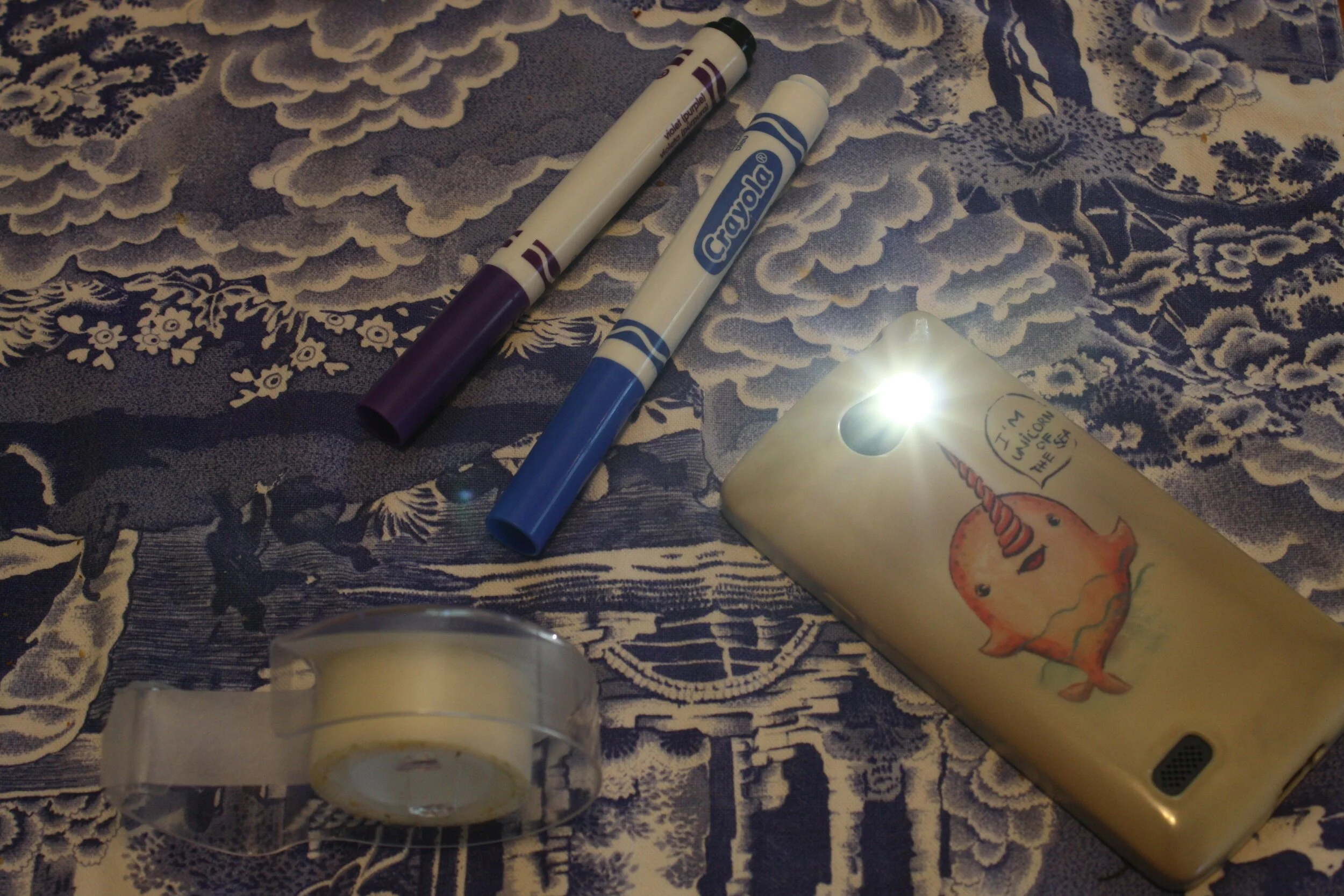At-Home STEM Activities: Seeing Like a Bee
Last week we talked about the role of pollinators and their importance to plants- now we’ll take a look at how one group of pollinators, bees, sees the world across the spectrum. You can even make your own UV light to help you see what they see!
Bees have eyes that are similar to our own in some ways and very different in others. Just like us, bees have three different color receptors- but while we can see red, green, blue, and all of the colors in between, they see in green, blue, and ultraviolet. This means that they can’t see red, but they can see ultraviolet which we can’t.
Photo of Welsh Poppy in visible (left), ultraviolet (center), and infrared (right) by Dave Kennard (www.davidkennardphotography.com)- the flower in ultraviolet light shows dark markings in the center as guidance for bees and other pollinators
Bees also have two different types of eyes- compound and ocelli. Each of the two compound eyes is made up of thousands of little lenses (each of our eyes has just one lens) and the bee’s brain puts the images from each lens together- to get an idea of what that looks like to a bee, Andy Giger (bee researcher, artist, science communicator) has put together a simulation here (the one with the spider makes me amazed that bees can figure out what that pattern means…). This makes bees great at distinguishing between light and dark and finding the edges of things, but it can present challenges differentiating between round objects. The three smaller ocelli can detect light intensity and direction which is helpful for navigation and orientation during flight.
How does being able to see ultraviolet light change things for bees? Ultraviolet waves can go through cloud cover- so even on cloudy days, bees can still see these hues. Research suggests that yellow and ultraviolet wavelengths combine to create a special ‘purple’ color for bees. And plants have figured out that ultraviolet flowers are really good at attracting bees. When we look at a field of flowers, they might look like a big white or yellow carpet, but for bees, there is a lot more going on. A lot of flowers have ultraviolet patterns highlighting the pollen and nectar sources, the most striking of which look like a bull’s eye target (to see some really amazing examples, check out Bjorn Rorslett- NN/Naerfoto’s collection)- these patterns help the bees zero in on the food source, and help the plant pollen hitch a ride on the bee. By using all of these cues, bees are able to efficiently pollinate billions of dollars’ worth of crops and other plants each year.
You can make your own ultraviolet light to get a sense of how the world looks to bees- it won’t be a perfect match, but will give you a hint of their view. For this activity, you will need:
-a flashlight (I used the app on my phone)
-clear tape
-blue and purple markers (standard kids markers are fine, but I was able to recreate the same thing with transparency markers and permanent markers as well)
Place a small piece of tape across the entire lens or bulb, depending on the kind of flashlight you are using
Use the blue marker to color the tape so that there are no clear parts on the lens/bulb *the biggest challenge for me was finding the right combination of tape and markers so that the markers would leave smooth lines rather than little droplets of color- both clear plastic film and shiny clear tape created droplets, and I ended up using slightly opaque wall-safe tape
Add a second piece of tape on top of the first
Use the purple marker to color the new layer of tape so that there are no clear parts on the blue layer
Add a third piece of tape to the pile
Use the purple marker to color the new layer so that there are no clear parts on the lower purple layer
Repeat this sequence until you have a dark indigo light coming through- for my phone, this meant a total of 4 blue and 8 purple layers, but it will depend on the brightness of your flashlight
Find a dark space to start looking at different colors!
Household objects in visible light
Household objects with my ‘ultraviolet’ filter





